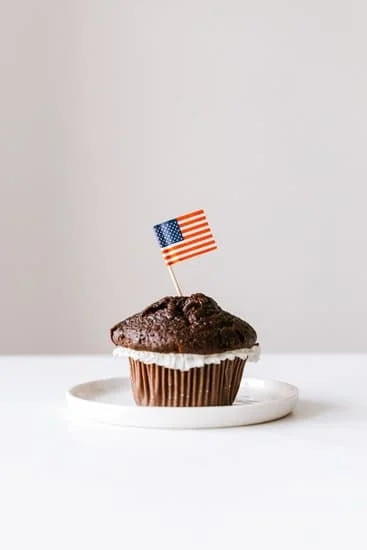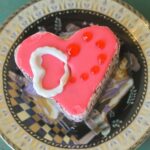Cake decorating is a skill that allows bakers to transform ordinary cakes into stunning works of edible art. From intricate designs to bold patterns, cake decorating adds that extra touch of creativity and flair. In this blog post, we will focus specifically on the use of large cake decorating tips. These tips are essential for creating bold and eye-catching designs, and we will guide you through the process of using them effectively to elevate your cake decorating skills.
Large cake decorating tips are popular among cake decorators for their ability to create bold and intricate designs. These tips come in various shapes and sizes, allowing for endless possibilities when it comes to design choices. Whether you want to create beautiful rosettes, elegant shell borders, or even 3D designs, large tips are an excellent tool to achieve these effects.
Before we dive into the specifics of using large cake decorating tips, it’s important to gather the right tools. You’ll need piping bags, couplers, and the specific large tips recommended for various designs. Having these tools on hand will ensure a seamless and efficient cake decorating experience.
Now that we have covered the basics, let’s move on to preparing the cake itself. This involves leveling the cake layers, applying a crumb coat for smoothness, and chilling the cake before moving onto the decorating stage. With a proper foundation in place, you’ll be ready to bring your artistic vision to life using large cake decorating tips.
Throughout this blog post, we will explore different piping techniques that can be achieved with large tips. We will provide step-by-step instructions along with visual aids for each technique so that you can easily follow along and begin creating stunning designs of your own.
While using large cake decorating tips opens up a world of possibilities in terms of design, there may be some common issues you might encounter along the way. In our troubleshooting section, we will address these challenges such as inconsistent icing flow or clogging and provide practical solutions and tips to overcome them.
Additionally, we will discuss how to add color and texture to your cake designs using large tips. From edible powders and glitters to sprinkles or even painting techniques, we will explore various ways you can enhance your creations and make them truly stand out.
As with any skill, practice makes perfect. In the final section of this blog post, we will emphasize the importance of practice in mastering the use of large cake decorating tips. We will provide suggestions for beginner-friendly designs to start with along with encouragement and advice to keep refining your skills over time.
Understanding Large Cake Decorating Tips
Large cake decorating tips are essential tools for creating visually stunning cakes. These tips are larger in size compared to standard cake decorating tips, allowing for bolder and more intricate designs. They are popular in the cake decorating community because they offer a wide range of possibilities and can elevate the overall appearance of a cake.
Using large cake decorating tips provides several benefits. Firstly, they allow decorators to create bold and eye-catching designs that instantly grab attention. Whether it’s piping big rosettes or making elaborate 3D shapes, these larger tips make it easier to achieve impressive results. Secondly, large tips provide better control over icing flow, allowing decorators to create consistent and even patterns on the cake surface. This is especially important when working on larger cakes where precision matters.
To use large cake decorating tips effectively, it is crucial to gather the right tools. The essentials include piping bags, couplers, and the specific large tips recommended for various designs. Piping bags should be sturdy enough to handle the pressure required for using large tips, while couplers allow for easy tip switching without emptying the bag. Additionally, it is important to have a selection of different large tips on hand to cater to different design needs.
| Tool | Description |
|---|---|
| Piping Bags | Durable bags capable of handling pressure when using large tips. |
| Couplers | Allows for easy tip switching without emptying the bag. |
| Large Tips (e.g., #1M, #789) | Specific large tips recommended for various designs. |
Understanding large cake decorating tips is the first step towards creating visually stunning cakes. By having the right tools and knowing their benefits, decorators can unleash their creativity and explore a wide range of possibilities.
Gathering the Right Tools
In order to use large cake decorating tips effectively, it is important to have the right tools on hand. These tools will not only make the decorating process easier but also help achieve professional-looking results. Here is a comprehensive list of essential tools needed for using large cake decorating tips:
- Piping Bags: Piping bags are a must-have tool for cake decorators. They come in various sizes and materials, such as disposable plastic or reusable cloth. It is recommended to have multiple piping bags available so that different colors or flavors of icing can be used without cross-contamination.
- Couplers: Couplers are attachments that allow you to easily change out different tips without having to empty and refill the piping bag with icing. This saves time and makes it convenient when working on intricate designs that require different tip sizes.
- Large Cake Decorating Tips: The specific large tips used will depend on the desired design. Some popular types of large tips include open star tips for creating rosettes and shell borders, petal tips for making ruffles, and specialty 3D tips for adding dimension to designs.
- Icing Scraper/Spatula: An icing scraper or spatula is used to smooth out the icing on the cake surface before piping decorations. It helps create a clean canvas for designing and ensures an even distribution of icing.
- Offset Spatula: An offset spatula is useful for spreading and smoothing frosting onto the sides of the cake. Its angled design allows for better control and precision.
- Turntable: A turntable is not necessary but highly beneficial when decorating cakes. It allows you to rotate the cake while piping, making it easier to create consistent lines and shapes.
- Food Coloring: Depending on the desired design, food coloring may be needed to create different shades or vibrant hues in the icing.
Having these essential tools ready before starting with large cake decorating tips will make the process smoother and more enjoyable. It is important to invest in good quality tools as they will last longer and contribute to better results.
Preparing the Cake
Leveling and Crumb Coating
Before you can start decorating your cake with large cake decorating tips, it’s important to prepare the cake properly. The first step is to level the cake layers. Uneven or domed cakes can make it difficult to achieve a smooth and polished finish. Use a long serrated knife or a cake leveler to trim off any excess height and create an even surface.
Once the cake layers are leveled, it’s time to crumb coat them. Crumb coating is a thin layer of frosting that helps seal in any loose crumbs and provides a smooth base for the final layer of icing. Start by applying a thin layer of frosting on top of one cake layer using a spatula. Spread it evenly across the surface, making sure to cover all sides.
Repeat this process with all your cake layers, then stack them on top of each other. Apply another thin layer of frosting around the sides and the top of the stacked cakes, smoothing out any imperfections as you go. The crumb coat doesn’t have to be perfect; its main purpose is to create a solid foundation for the final layer of icing.
Chilling the Cake
After crumb coating your cake, it’s crucial to chill it in the refrigerator for at least 30 minutes before continuing with the decorating process. Chilling helps firm up the frosting, making it easier to work with and less prone to smudging or melting away when adding more layers.
Place your assembled cake on a flat surface inside the fridge, ensuring that it won’t be disturbed or come into contact with other food items. Allow enough time for both the cake and frosting to become slightly firm but not completely solid.
During this chilling period, you can also use this time to prepare any additional decorations or fillings you plan on incorporating into your design. This way, everything will be ready once you start working with the large cake decorating tips.
Achieving a Smooth and Stable Base
Before moving on to the actual decorative piping, take a few moments to review your chilled cake. Run your hands over the surface, checking for any bumps or uneven areas. If you notice any imperfections, use a small offset spatula or a clean finger dipped in warm water to smooth out the frosting.
Additionally, if you find that your cake is not level or stable enough, consider using dowels or cake support systems to ensure it remains structurally sound during transportation and serving. This step is particularly important for tiered cakes with multiple layers.
By taking the time to properly prepare your cake before decorating it with large tips, you’re setting yourself up for success. A smooth and level base will make your designs stand out and allow you to achieve intricate details more easily.
Piping Techniques
Rosettes
One of the most popular piping techniques that can be achieved with large cake decorating tips is creating rosettes. Rosettes are simple yet elegant designs that resemble swirling ribbons or roses. To create rosettes, start by holding the piping bag at a 90-degree angle to the cake surface.
Squeeze the bag firmly and begin piping in a clockwise or counterclockwise motion, moving outward in a circular pattern. As you pipe, gradually release pressure on the bag to taper off the end of each rosette.
Shell Borders
Shell borders are another versatile piping technique that adds texture and dimension to a cake’s edges. To create shell borders with large tips, hold the piping bag at a 45-degree angle to the cake surface. Starting from one end, squeeze the bag while moving it in a zigzag motion or a semi-circular shape. Release pressure at each peak to create individual shell shapes along the border. Repeat this process until your desired border length is achieved.
Ruffles
For those looking for a more whimsical and intricate design, ruffles are an excellent option. Ruffles give the illusion of folded fabric or frills cascading down the sides of a cake. To create ruffles using large cake decorating tips, hold the piping bag at a slight angle and apply gentle pressure while moving in an up-and-down motion, slightly overlapping each layer of ruffle.
3D Designs
Large cake decorating tips also lend themselves well to creating three-dimensional designs such as flowers or figures on top of cakes. For example, you can use specialized large petal tips to pipe realistic-looking flower petals or sculptural elements like bows or hearts directly onto your cake’s surface. These intricate designs require patience and practice but can elevate your cake decoration skills to new heights.
Whether you are a beginner or an experienced decorator, experimenting with different piping techniques can unlock a world of creative possibilities. Practice each technique with varying pressure and speed to achieve different effects. Don’t be afraid to mix and match techniques or even create your own unique designs. The key is to have fun with the process and let your creativity shine through.
Troubleshooting Common Issues
When using large cake decorating tips, it is not uncommon to encounter a few challenges along the way. However, with the right knowledge and techniques, these issues can be easily overcome. Here are some common problems that may arise when using large cake decorating tips, along with solutions and tips to help you achieve your desired results.
- Inconsistent Icing Flow: One of the most frustrating issues when using large cake decorating tips is experiencing inconsistent icing flow. This can result in uneven designs or blobs of icing on your cake. To address this problem, make sure that the consistency of your icing is just right.
If it is too thick, it may cause blockages in the tip; if it is too runny, it may create messy and uncontrollable lines. Adjust the consistency by adding more powdered sugar or liquid as needed until you achieve a smooth and steady flow of icing. - Clogging: Another issue that may occur when using large cake decorating tips is clogging. This happens when the tip becomes blocked with icing or air bubbles, causing interruptions in your piping work. To prevent clogging, make sure to properly strain your icing before filling your piping bags to remove any lumps or air pockets. Additionally, periodically check the tip throughout your decorating process and use a toothpick or clean cloth to clear any blockages.
- Difficulty Achieving Desired Shapes: Sometimes, achieving intricate shapes or designs with large cake decorating tips can be challenging. The key to overcoming this issue is practicing proper pressure control and consistent hand movements. Start by applying even pressure on your piping bag while maintaining a steady speed across the surface of the cake. For sharper edges or points, gently release pressure as you lift the tip away from the cake.
By troubleshooting these common issues and implementing these helpful solutions and tips, you will be well-equipped to tackle any challenges that arise while using large cake decorating tips. Remember that practice makes perfect, so embrace the learning process and keep refining your skills. With time, patience, and creativity, you will be able to create stunning cake designs that will impress everyone who sees them.
Adding Color and Texture
When it comes to creating visually stunning cakes, adding color and texture is a crucial step in the cake decorating process. By incorporating various colors and textures into your cake designs using large cake decorating tips, you can take your creations to the next level. In this section, we will explore different techniques for adding color and texture to your cakes.
One way to add color to your cakes is by using edible powders or glitters. These can be dusted onto the surface of the cake to create a shimmering effect or layered on in specific areas for a more dramatic look. Additionally, sprinkles can be used to add pops of color and texture. Consider using different shaped sprinkles such as hearts, stars, or confetti for added visual interest.
Another technique for adding color is through painting directly on the cake. This can be done using food coloring mixed with a clear extract like vodka or lemon extract. With a clean brush, you can paint intricate designs or patterns onto the cake’s surface, allowing for unique customization.
Texture can also be added to your cakes with large cake decorating tips. For example, you can create raised patterns by piping lines or swirls onto the surface of the cake. This provides both visual interest and an additional layer of texture that enhances the overall design.
To achieve even more texture, try using specific large decorating tips such as grass tips or basketweave tips. Grass tips create a textured “grass-like” appearance that can be perfect for nature-themed cakes or cupcakes. Basketweave tips create an intricate woven pattern that adds depth and complexity to any design.
Practice Makes Perfect
When it comes to using large cake decorating tips, practice is key to achieving professional-looking results. While these tips may seem intimidating at first, with time and patience, anyone can master their techniques and create stunning cake designs. In this section, we will discuss the importance of practice and provide suggestions for beginner-friendly designs to start with.
Using large cake decorating tips requires a certain level of control and precision. It takes time to develop muscle memory and familiarize yourself with the pressure needed to achieve desired shapes and designs. By dedicating regular practice sessions to experimenting with different piping techniques, you will gradually build confidence and improve your skills.
For beginners, it is recommended to start with simpler designs that require fewer intricate details. Some great designs to begin with include basic rosettes, shell borders, or simple ruffles. These techniques are relatively easy to pick up and allow for plenty of room for error. As you become more comfortable, you can gradually move on to more advanced designs such as 3D flowers or elaborate scrollwork.
Remember that every great cake decorator started as a beginner. Embrace imperfections and view them as opportunities for growth. Keep practicing, even if your initial attempts may not turn out as expected. The more you practice, the better you will become at handling the large cake decorating tips and creating beautiful designs that will wow your family and friends.
Conclusion
In conclusion, using large cake decorating tips can elevate the visual appeal of any cake and allow for the creation of bold and intricate designs. By understanding what these tips are and how to use them effectively, decorators can achieve stunning results. Gathering the right tools, preparing the cake properly, and familiarizing oneself with various piping techniques are all crucial steps in mastering this skill.
Troubleshooting common issues that may arise during the decorating process is also essential, as it ensures a smooth experience and desired outcomes. Adding color and texture to cakes using large tips gives decorators endless creative possibilities. From edible powders to painting techniques, there are various ways to enhance the visual appeal of a cake.
Above all, practice is key in perfecting the use of large cake decorating tips. Starting with beginner-friendly designs and gradually challenging oneself will lead to improvement over time. The blog post aims to encourage readers to unleash their creativity and experiment with different designs.
Overall, utilizing large cake decorating tips opens up a world of artistic possibilities for decorators. Don’t be afraid to try new techniques, colors, and textures – let your imagination soar as you create visually stunning cakes that leave a lasting impression on everyone who sees them.
Frequently Asked Questions
How do you use a cake decorating tip?
When using a cake decorating tip, start by preparing your piping bag with the desired tip. Cut a small opening at the bottom of the bag to fit the tip securely. Insert the tip into the hole and push it down until it reaches the end of the bag. Make sure it is fitted tightly so that icing or frosting doesn’t escape from the sides.
Fill your bag with your desired frosting or icing, not exceeding more than two-thirds full to avoid any overflow. Squeeze the bag gently from the top, applying consistent pressure to create a smooth flow of frosting through the tip. Practice different techniques like piping shells, rosettes, borders, or writing by applying varying amounts of pressure and controlling your hand movements.
How do you use a Wilton large tip coupler?
Using a Wilton large tip coupler is an efficient way to switch between different decorating tips without having to empty and refill piping bags repeatedly. First, prepare your pastry bag by cutting off its end and fitting one half of the coupler tightly inside it. Ensure it’s securely beyond any openings; otherwise, frosting may escape around it.
Place your desired decorating tip over this partially inserted coupler piece before securing its other half on top of it from outside the pastry bag. Screw them together snuggly until they are tightly connected but avoid overtightening as it may make removing tips challenging later on. Once assembled properly, fill your pastry bag with frosting or icing and squeeze as needed while creating beautifully decorated baked goods.
How do you use cake decorating tips with Ziploc bags?
If you don’t have a traditional reusable piping bag available, Ziploc bags can serve as a convenient alternative for cake decorating tips. Begin by selecting a Ziploc bag appropriate for your needs; generally quart-sized bags work well for most tasks but adjust accordingly based on your project’s size and complexity. Fill your desired amount of frosting or icing into one corner of the bag leaving ample space for grip at the top before sealing it shut completely towards that corner where you added the icing. Now, cut a small hole at the opposite corner of the bag diagonally to create an opening for your cake decorating tip.
Insert the tip firmly into that hole making sure it fits snuggly and securely. Apply gentle pressure from the top of the bag as needed while squeezing to control your frosting flow and desired design. Remember to practice different techniques and experiment with controlling pressure for optimal results.

Welcome to our cake decorating blog! My name is Destiny Flores, and I am the proud owner of a cake decorating business named Cake Karma. Our mission is to provide delicious, beautiful cakes for all occasions. We specialize in creating custom cakes that are tailored specifically to each customer’s individual needs and tastes.





